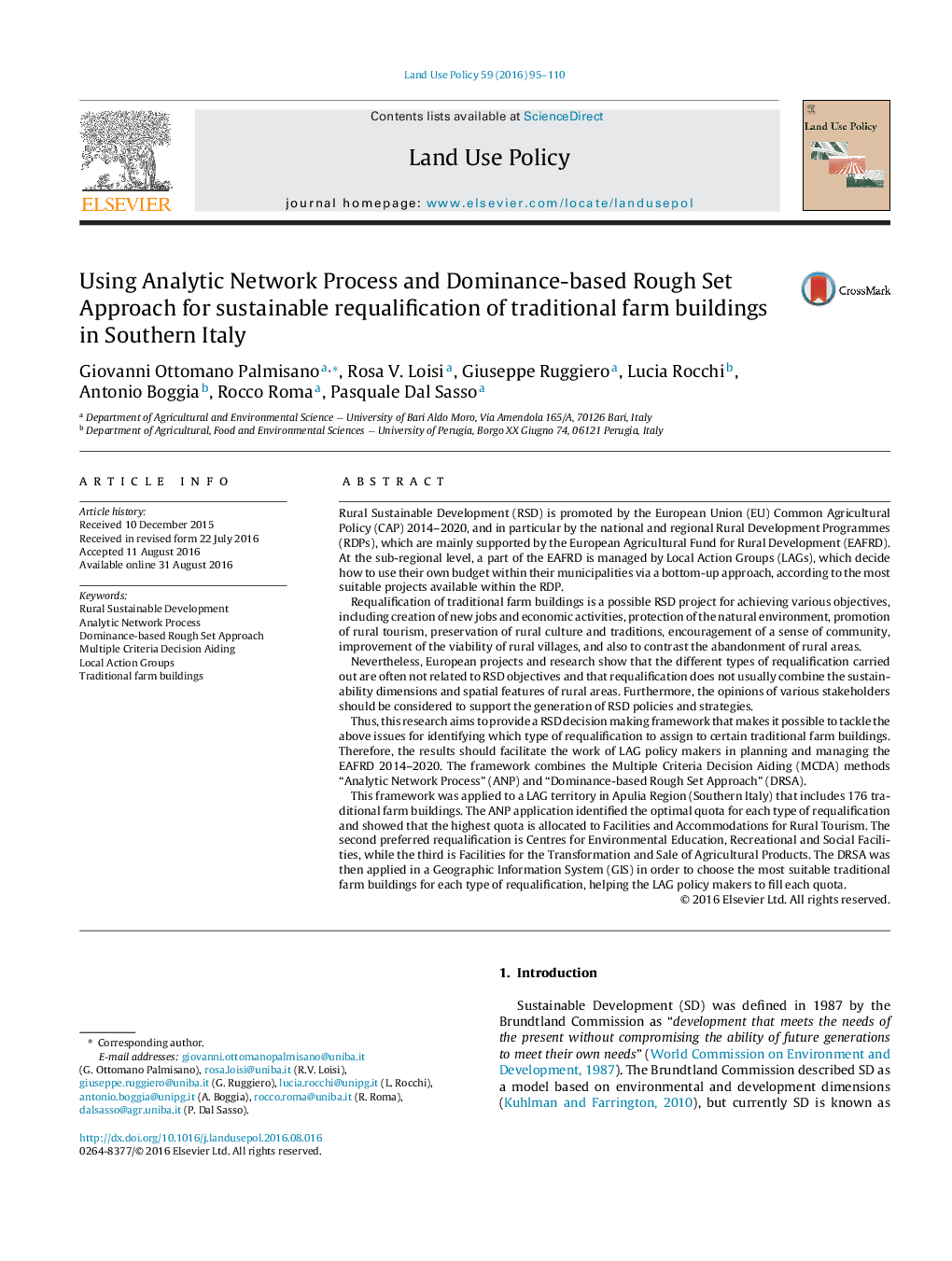| کد مقاله | کد نشریه | سال انتشار | مقاله انگلیسی | نسخه تمام متن |
|---|---|---|---|---|
| 6461484 | 1421824 | 2016 | 16 صفحه PDF | دانلود رایگان |

- 176 traditional farm buildings and six types of requalification were identified.
- Analytic Network Process to provide the requalification quota.
- Dominance-based Rough Set Approach to assign a specific type of requalification.
- Farm buildings were assigned to a specific requalification to fill the quota.
Rural Sustainable Development (RSD) is promoted by the European Union (EU) Common Agricultural Policy (CAP) 2014-2020, and in particular by the national and regional Rural Development Programmes (RDPs), which are mainly supported by the European Agricultural Fund for Rural Development (EAFRD). At the sub-regional level, a part of the EAFRD is managed by Local Action Groups (LAGs), which decide how to use their own budget within their municipalities via a bottom-up approach, according to the most suitable projects available within the RDP.Requalification of traditional farm buildings is a possible RSD project for achieving various objectives, including creation of new jobs and economic activities, protection of the natural environment, promotion of rural tourism, preservation of rural culture and traditions, encouragement of a sense of community, improvement of the viability of rural villages, and also to contrast the abandonment of rural areas.Nevertheless, European projects and research show that the different types of requalification carried out are often not related to RSD objectives and that requalification does not usually combine the sustainability dimensions and spatial features of rural areas. Furthermore, the opinions of various stakeholders should be considered to support the generation of RSD policies and strategies.Thus, this research aims to provide a RSD decision making framework that makes it possible to tackle the above issues for identifying which type of requalification to assign to certain traditional farm buildings. Therefore, the results should facilitate the work of LAG policy makers in planning and managing the EAFRD 2014-2020. The framework combines the Multiple Criteria Decision Aiding (MCDA) methods “Analytic Network Process” (ANP) and “Dominance-based Rough Set Approach” (DRSA).This framework was applied to a LAG territory in Apulia Region (Southern Italy) that includes 176 traditional farm buildings. The ANP application identified the optimal quota for each type of requalification and showed that the highest quota is allocated to Facilities and Accommodations for Rural Tourism. The second preferred requalification is Centres for Environmental Education, Recreational and Social Facilities, while the third is Facilities for the Transformation and Sale of Agricultural Products. The DRSA was then applied in a Geographic Information System (GIS) in order to choose the most suitable traditional farm buildings for each type of requalification, helping the LAG policy makers to fill each quota.
Journal: Land Use Policy - Volume 59, 31 December 2016, Pages 95-110